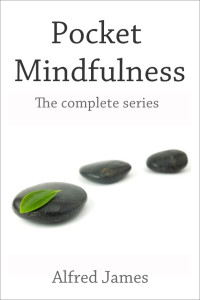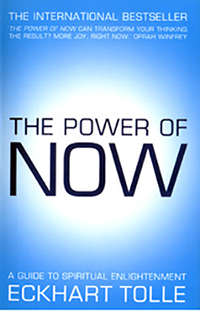In the opening chapter of his book, Pocket Mindfulness, Alfred James provides an elegant definition of mindfulness – a way of thinking about life that has its origins in Buddhist philosophy and practice.
Mindfulness is purposeful awareness without judgement of one’s self or others. It is the clear knowing of actuality, rather than the seeing of preconceived reality . . . to fall awake with the world, to step into one’s true being . . . to let go of the past, release anticipation of the future and own the moment . . . to realise the beauty of impermanence, to understand that nothing can be owned except the moment, which must be let go of to embrace another . . . [and] to see the intrinsic beauty of the world.
Much has been written about mindfulness as a pathway to personal happiness and more recently as a practice that can also be helpful in a business context to improve individual, group and organisational performance. The idea is that people who are fully aware (know and appreciate their true self) are better able to focus their attention in a purposeful way (to be mindful), which is more likely to result in positive and productive outcomes for themselves and their organisational communities. These are people who endeavour to live in the ‘now’, who see the world as full of possibilities rather than problems, and who have the personal resilience (assured self awareness) to embrace life’s challenges as opportunities for learning and change.
These ‘mindful’ people also have the potential to experience the joyful alignment of their inner and outer worlds – to be what I would call congruent. Their attention to purpose provides a pathway from mindfulness to congruence – an opportunity to pursue their life on-purpose, to be authentic and to create a positive ripple in the world by simply choosing to be themselves.
If I am a congruent person, I will know who I am . . . I will be confident and comfortable being who I am and not who I am supposed to be. I will be living my life from the inside out. I will be the peace and happiness that I feel . . . I will be the difference that I wanted to make in the world . . . [and] I will smile at the people I meet. (The Congruence Framework)
The pathway to individual congruence is also a pathway to happiness, or what I would rather term joyfulness. This joyful alignment of our inner and outer worlds is achieved through living life on-purpose – creating an authentic presence which constantly aligns what we do with the truth of who we are – living purposefully in the ‘now’.
We can sustain this purposeful existence by focusing our attention on selfless service to others, which enables the development of the meaningful relationships that nurture and support our life journey. These are the relationships that extend our knowing and provide the opportunity to co-create our future with the people we care about – the people we love.
One could perhaps say that congruence is simply mindfulness in action.
For more about individual congruence, please refer to Part Three of my book The Congruence Framework.
Books mentioned in this post:





Another way to look at things, which may remove some of the potential complication, is to live your life being authentic every minute of every day. Secondly, do not be judgemental of others or yourself. My experience is that if you practice these values you will bring so much happiness into your life. And btw, along the way you will be practising mindfulness without having to think about it. It does not need to be overly complicated, i would lean toward simplification. I once had allowed my work life to overtake my life, several times actually. Believe me there is a better way to approach life and find inner happiness.
Beautifully said Tony. “…congruence is simply mindfulness in action.” So many of us know our true nature and heart-led motivators, underneath the noise of our minds, and yet it takes quite a commitment to let that flow into our actions. Of course it’s easy to know something, it’s much more challenging to actually live that knowing in your daily life. I love the simple description from Alfred James about mindfulness being purposeful awareness. We can bring our true nature to all we do, aligning our inner values with our outer actions, and experience a flow and joy as a result, when we live each day being purposefully aware of ourselves and others. Enjoyed reading your post Tony. Thanks for sharing. Looking forward to reading your book! Best wishes. Bernadette
The concepts of mindfulness and congruence are relatively simple constructs BUT they are not so easy to apply in practice. If you want a great introduction to mindfulness you should try Echart Tolle’s bestseller The Power of Now. And if you want to understand more about individual congruence I suggest you read Part Three of my book The Congruence Framework.
The essential idea of the post is that mindfulness is a pathway to congruence – it is authentic self awareness in context with every day living.
The pathway steps are loosely defined as follows:
– Discover and live your own unique purpose – your raison d’etre
– Embrace your community – love your people
– Release your real potential – embrace difference, diversity and change in your life
– Make a difference – contribute a life of service to your community
– Be a sustainable person – pay attention to your wellbeing
You actually make it seem so easy with your presentation but I find this matter to be actually something that I think I would never understand. It seems too complicated and extremely broad for me. I am looking forward for your next post, I’ll try to get the hang of it!
Cheap oakley reviews http://www.offshore-chicago.com/kayaks/oakley/Cheap-oakley-reviews.html